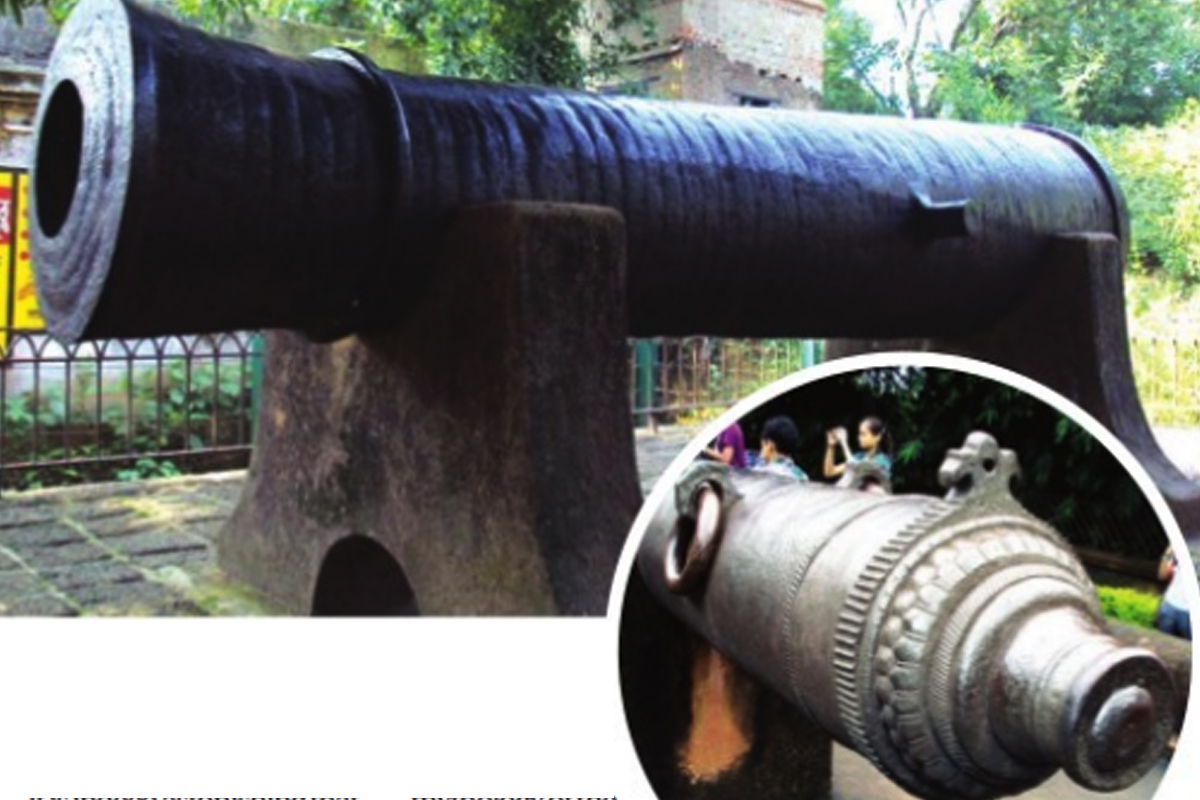Met issues second yellow alert within a week
After a short period of relief, lasting only a week, Kolkatans and residents of south Bengal are witnessing yet another wave of hot and humid weather.
The two cannons in Murshidabad and Bishnupur have remained an illustrious part of the states history.

PHOTO: STATESMAN NEWS SERVICE
History is a key witness to the fact that war despite its destructive capacity, has contributed in terms of travelling utensils, medicine, arms and involuntary exchange of different form of arts and science. Cannon, the highly effected war weapon first brought in India by Babur is an example of a weapon, which remains significant in history and contributes to India’s heritage. There are two big and majestic cannons in Bengal by the name of Jahan Kosha and Dalmadal, located in the Murshidabad and Bishnupur districts respectively
The Jahan Kosha literally means ‘The Destroyer of the World’. The history of this destructive instrument was inscribed in French on nine brass plates on the external surface of the cannon. During the time of Emperor Shah Jahan, Bengal was under the rule of Islam Khan and comprised of the entirety of Bengal along with Bihar, Odisha, Assam and Jahangir Nagar, which is presently known as Dhaka. Police officers were known as daroga and two such darogas by the name of Shree Mohammad and Hara Ballav Das took the initiative to oversee the manufacture of the cannon. Janardan Karmakar, the famous blacksmith and gunsmith of Dhaka delivered the cannon in 11 months with the help of iron and seven other metals.
The 17-feet long cannon require 17 kilograms of gunpowder to exhibit a massive explosion. The porter vehicle of Jahan Kosha was destroyed by the ruins of time. Several legends related to the cannon are still narrated by the locals. One such myth says that once the canon Jahan Kosha became angry and wanted to be drowned in the river Ganges but one banyan tree held it by its hanging branch.
Advertisement
The locals impart humanistic features to the cannon and relate personified legends to uplift the past glory days of Murshidabad. The Jahan Kosha remained in that singular position for many years till the Government arranged an elevated spot so that cannon could be properly displayed to tourists and visitors. It remains to be an artefact of interest to and is a main attraction in the Topekhana village of Murshidabad.
The Dalmadal or Dalmardan means ‘The Destroyer of Enemies’ or ‘The Hunter’. The locals take personal pride in this historical artefact and call it ‘The Enemy Hunter of Bishnupur’. This famous canon of Bengal was prepared during the dynasty of Bir Hambir with Rs 1, 25,000, which was invested at that time.
Jagannath Karmakar, an experienced blacksmith and engineer from the district of Bishnupur was the principle man behind the manufacture of the cannon. Iron was the principle metal used in the casting. It should be mentioned that though the canon remained in an open area for a considerable amount of time, yet no rust or destructive modifications appeared on the body of the cannon. The canon being 12-feet in length and 5972 kilograms in weight is much wider than the Jahan Kosha cannon.
It is indeed astonishing that at that time of limited machinery, such a canon with nonrusting iron casting could be manufactured. It must also be noted that the movement of the massive cannon required the use of an appropriate vehicle therefore legends say that instead of vehicles, elephants were used as the porter of this heavy instrument.
After the downfall of Malla Dynasty, this royal canon was carelessly half buried under the red soil of Bishnupur. However, the legendary cannon resurfaced again after intense excavations made by the British Rulers. Bishnupur has for ages given us myths, legends and stories associated with the mythology of the district.
The story that Lord Madanmohon (popularly known as Lord Krishna) fired that weapon to protect the people of his city from the ravages by Maratha dacoits still does the rounds in the homes of Bishnupur as local folklore.
This has led the natives to worship the canon which to them was touched and blessed by the hands of Lord Madanmohon. Presently the canon is positioned at the lateral left side of Chinnamastha temple.
There can be no doubt that both the cannons carry historical evidence of Bengal’s days of glory with their histories. At the same time, it also signifies the advanced use of incredible technology at primitive times which allowed raw materials available in Bengal to be transformed into such skilled instruments. The cannons have stood tall before the ruins of time and are monumental evidence of the existence and advanced work skills of great artisans present at that time.
Advertisement